
by Lidia Paulinska | Jan 17, 2016
January, 2016, Storage Visions – Mark Schiller is Executive Director of Trusted Computing Group, which provides security standards to the computing industry. The group is a collection of over 100 partners that include commercial companies, government participation, academia and experts in the field of security and privacy. Schiller covered the challenges facing security and protection of stored content, and shared his view on SEDs (Self Encrypting Drives).
Why Self-Encrypting Drives?
There are world-wide financial and legal consequences for data loss and data breeches and the occurrence of such events have been increasing. SEDs create a layer of protection from that happening as well as providing compliance with the safe harbor laws in the most of the US and EU for loss of devices that are secured with encrypted data. Schiller spoke after Michael Willett underlined the main reason of using SEDs. The SEDs have a lower overhead for encryption and decryption than software encryption. Another feature is SEDs allow for a fast crypto-erase that sanitizes drive data before drive replacement, repair, de-commissioning, re-purposing and end of life.
He summarized the talk with SSDs are the new standard for fast storage media. In combination with the NVMe storage interface, they are driving higher performance and lower latency solutions, meaning data safety can be realized without the negative impact of software encryption on system performance.
More information about Trusted Computing Group at www.drivetrust.com
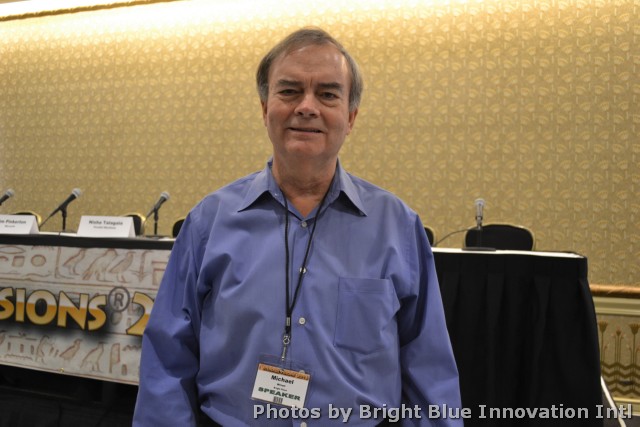
by Lidia Paulinska | Jan 17, 2016
January, Storage Visions – Michael Willett from Bright Plaza moderated the Storage Vision’s panel discussion about security and protection. He stated that the idea of encryption being built into the hardware is becoming universal. There are many benefits leaning on the concept of Hardware-based Self-Encryption being a better option over Software-based Encryption. First is the transparency and easy management. SEDs (Self Encrypting Drives) come from the factory with an encryption key already generated so there is no encrypting key to manage. Second, the Life-cycle cost. In the software case, it is an on-going cost versus pro-rated into the initial drive for SED. Third is disposal or re-purposing cost for the drive. It is easy to erase the on-board encryption key for SEDs providing safe disposal. There is also no problem with re-encryption as there is no need to ever re-encrypt the data. The last benefits are in (A) performance: there is no degradation in SED performance; (B) standardization: the entire HDD industry is building to the TCG/SED specifications, and finally (C) there is no interference with upstream processes or use.
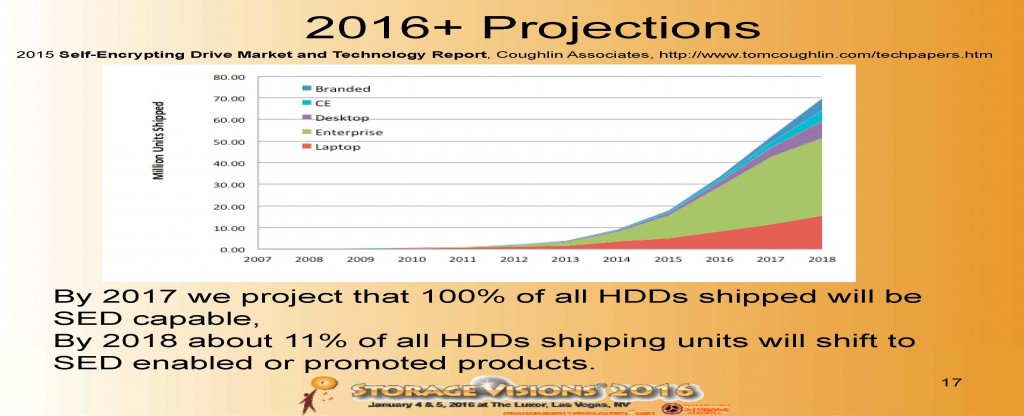
The session covered the challenges facing security and protection of stored content, including content on mobile devices as well as at home and in the cloud. It explored the reasons why OPAL based client encrypted storage is a key factor in data security, Standardized security products are making data security easier than ever while enabling desired content sharing.

by Lidia Paulinska | Jan 2, 2016
Jimmy Wales, co-founder of Wikipedia, dreamt about a world in which every single person on the planet is given free access to the sum of all human knowledge. In 2001, he founded Wikipedia, making that dream a reality. Today, Wikipedia is the seventh most visited website in the world. There are 500 million unique visitors every month visiting the site from every country in the world. Wikipedia contains nearly 5 million articles, that is being added to at the rate of 750 articles every day.
Wikipedia is a free encyclopedia that is written by thousands of volunteers, and has content in 288 languages. Key statistics for the site are: 8 languages that have over 1,000,000 entries; 46 languages have at least 100,000 entries; 120 languages have at least 10,000 entries and 223 languages have at least 1,000 entries. For Wikipedia, “free” means not just only no cost for the readers or contributors, but also freedom of speech. Everyone can copy, modify, and redistribute the content, both commercially and for private use.
In 2004 Jimmy Wales and Angela Beesley Starling announced the creation of their next project named Wikia. Wikia follows the same success model of Wikipedia. Wikia is a free web hosting service for wikis. The site is free of charge and derives its income from advertising. It publishes all user-provided text under copyleft licenses (https://copyleft.org/) . Today Wikia has more than 136 million readers every month and is written in 200 language.
Jimmy Wales dream about “the sum” of all human knowledge came true twice, due to his perseverance and his decision on sharing the vision of his dream with others.
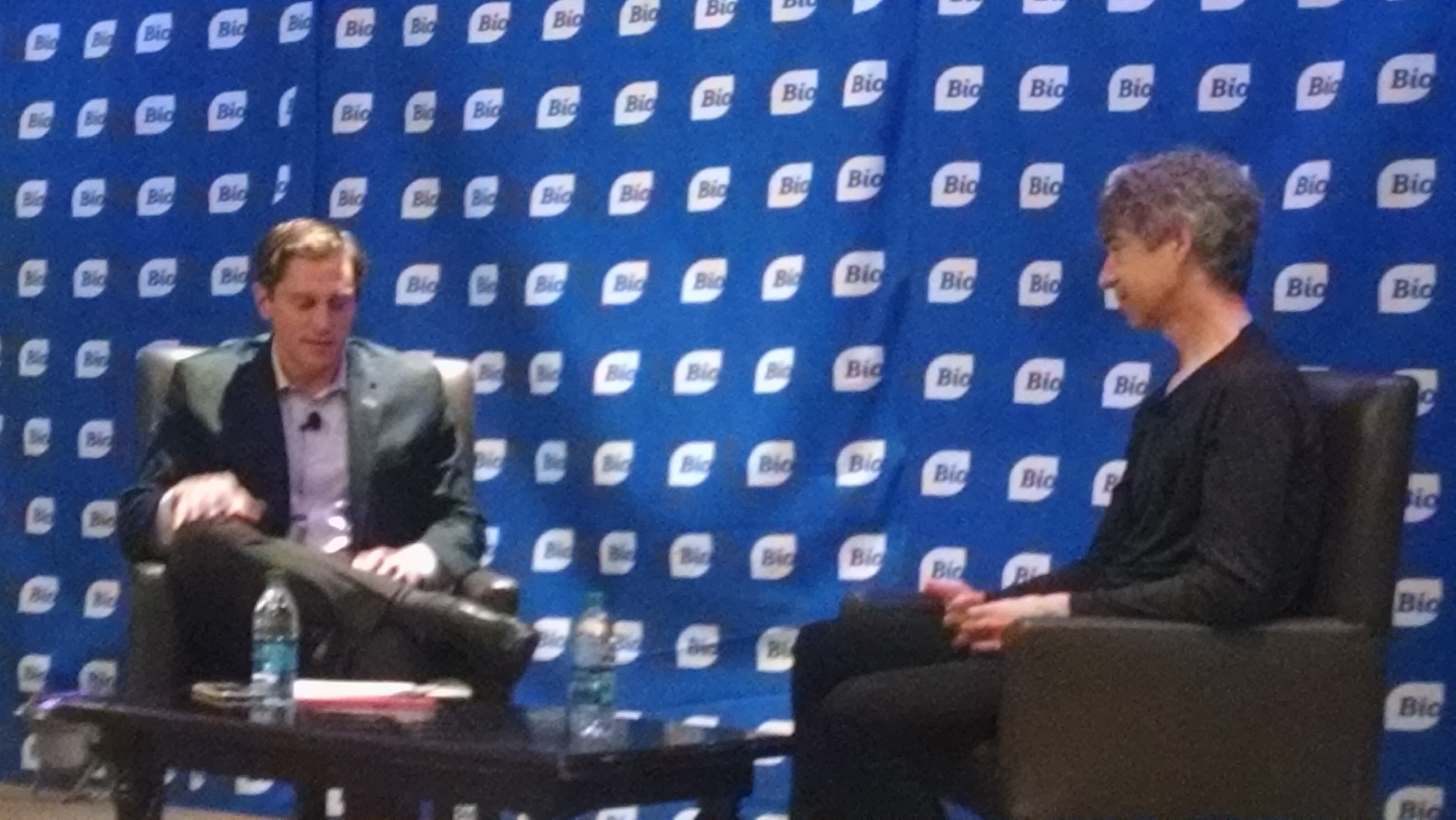
by Lidia Paulinska | Nov 25, 2015
The lunchtime plenary session at the Bio Investor Forum in San Francisco featured a fireside chat with BioTech investor Robert Nelsen. Nelsen described himself as a self-motivated investor who started his investment in projects at age 11. His key strategy today and main personal belief on investing is that science and technology matters, and that basic research is key. His premised was explained in his love the Scientific American which has a section showing the understanding and ideas in science 10, 20 and 50 years ago. The results shown in this section, are that what science understood at a given time was wrong based on the current understanding and science. This is an on-going challenge, as the improvements in science research and the interpretation of the results are constantly returning new explanations for basic science, and delivering new opportunities for business.
Using this information, Nelsen believes that companies should try new things and in new ways to learn the best ways to make something right, based on the latest information available. This mentality allows Robert to invest and focus big hard problems that multiple angles and aspects to address the problem. This gives multiple opportunities to find valid solutions over traditional methods. An area of the biggest interest is psychological drugs which address the varied space of Alzheimer’s disease and depression.
Right now, the cost of treatment and medication is 80% of the cost of a reactive care treatment plan. The cost increased as hospitalization and invasive methods are tried. He believes that many of these cases can be treated with drugs rather than invasive physical care. This would bring the treatment to an out-patient methodology, and dramatically impact the $3T in physical care billing annually.
From an investment and business strategy, the IP piece is secondary to getting the right scientists on the best practice for the program. The place for these pieces is cures require first line defensive IP, secondarily in the marketplace offensive position IP. This idea yields a belief that in the bay area, with the right strategy and the right team (good science and good people) can do anything and can beat big pharma to market and with innovative products.
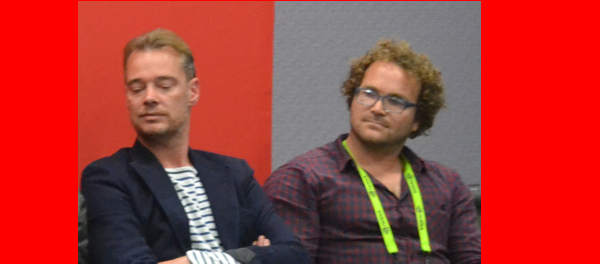
by Lidia Paulinska | Sep 1, 2015
August 2015, Siggraph – Two panelists came from Amsterdam to attend Siggraph 2015 and at the Lenovo’s panel share discussion about their new project. Tim Geurtjens and Gijs Van Der Velden are co-founders of MX3D, a company researching and developing groundbreaking robotic 3D printing technology. They developed 3D large scale printers that allowed printing large structures and different materials including plastic, stainless steel and aluminum. Tim and Gijs recently came up with an ambitious plan to build a steel bridge over the canal in Amsterdam. Geurtjens confessed that idea of building a bridge using 3-D printing techniques started with frustration about the 3D printing market. “We use 3D printers all the time, but they make only the small parts. We asked the companies that manufacture 3-D printers to develop printers for large parts but the companies were not interested in developing them” said Guertjens, “so we decided to do it on our own.”
Tim and Gijs discussed their plan to build a 3D printed steel bridge over the canal in Amsterdam. “We want to show the world what that technique could do”. The founders of MX3D are getting government support for this project as the city officials are really interested in presenting Amsterdam as an innovative and progressive city. Even though they invented the technology, they estimate that it will take them a year to understand fully, the capacity and the limits of their technology in an outdoor application and do a design. The starting date is set for spring 2017 and with an estimate to take 3-4 months to print the bridge. The most interesting thing about this 3-D image technique is that we can not only print the building as a new object, but we can use the multi-robots in the system to build in place from an existing structure. In that case, the projects can be of unlimited size” said Geutjens.
Using these 3D printing techniques, it is possible to recreate things. Geurtjens sees the printers as an extension of the existing techniques. Currently, there is a Chinese company that is us using additive manufacturing to print buildings, but it is more efficient and most appreciated, if we use the technology to create additional decorative pieces. It is well known that decoration is the heart of architecture. The use of computers and printers allows these designs to be extravagant, as it does not matter how complex the pieces are. Why use traditional techniques if we can add to them with the time and money consuming details?
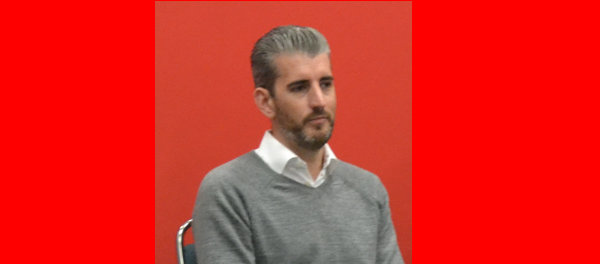
by Lidia Paulinska | Sep 1, 2015
August 2015, Siggraph – Chris Edwards is the Founder and CEO of The Third Floor, the world’s leading pre-visualization studio services up to 40 major studio feature films each year. He is also Co-Founder/CEO of The VR Company. In addition to the two companies, he has extended his qualifications into the content area. Over the last 10 years he has been building a massive database of 3D assets, and servicing the world’s top Directors. He began his career in digital cinematography at Disney Studio and then he worked for George Lucas at Skywalker Ranch. His credits include Marvel franchises like Avengers and X-Men, the new Godzilla and Gravity.
“In the previsualization studio, we are working in real time to create scenes ahead of production, so a director can try one and have other options to choose from” said Edwards. . He explained that his company helps incubate concepts and package production for VR. The studio is experimenting with master layer imagery, which is combining CGI with live action photography for VR.
“Every time you go to see the Broadway play you feel like you are transformed by this amazing experience. We need to bring back that kind of language. Before we had cinema”, he continued, “we had a rectangle on the wall to display, dream, and still entertain us. That was called theater or play or some performance. It usually happened in front of the audience. The actors stayed sometimes on the front, or they go around. When you see Cirque du Soleil they come from above. The director uses all the tricks that work: sound design, blocking the characters and how they move around you, and lighting.”
Page 5 of 7« First«...34567»






